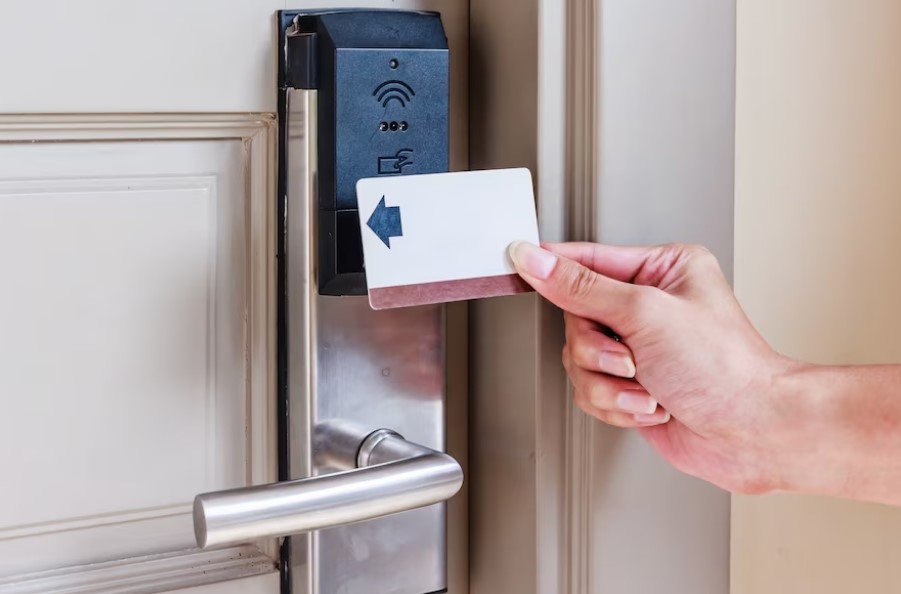
Have you ever stopped to wonder about those plastic key cards you use to enter your hotel room? The ones you tap against the door handle before that satisfying "click" grants you access? Those unassuming cards are little marvels of technology. Let's dive into how hotel lock cards work their magic.
At their core, hotel key cards operate using either magnetic stripe or RFID (radio frequency identification) technology. The two function quite differently.
These were the first type of key card system widely adopted by hotels starting in the 1990s. Each card has a magnetic strip or stripe on the back, similar to a credit card. This stripe contains a tiny electromagnetic coil that gets magnetized with an encoded pattern during check-in.
This encoded pattern represents your specific room number and authorized dates. When you swipe or insert the card into the door lock reader, it detects this magnetic pattern. If it matches the code for your room and stay dates, the lock temporarily unlocks to allow you entry.
While seemingly secure for their time, magnetic strip cards have some downsides. The magnetic data can get corrupted if exposed to other magnetic fields (like your phone). The strips also wear out relatively quickly with use. Despite upgrading to digital encoding, the underlying technology is still quite dated.
Steadily over the 2000s, many hotels shifted to using RFID (radio frequency identification) key cards. Rather than magnetic strips, these cards have a tiny embedded chip and antenna. During check-in, the chip gets loaded with a unique code corresponding to your room and stay period.
To unlock your door, you simply hold the RFID card an inch or two from the lock sensor. The sensor uses radio waves to momentarily power up and read the code from the chip. If it matches the valid code for that room and time, the lock disengages to let you in.
RFID cards are more durable and harder to duplicate than magnetic stripes. The data encoding is also more secure using encryption. Higher-end hotels value RFID for these security advantages, despite the moderately higher costs.
The credential data is designed to be extremely minimal. For security, the cards typically only contain the room number and arrival/departure dates. No other personal identification information is stored.
The answer lies in the secured hotel management software that links your reservation details to that coded card number. The lock system simply has to validate the coded numbers, not any guest's personal data.
This design makes hotel key cards secure. If a card is lost or stolen, it can quickly be deactivated without compromising any sensitive guest information. The hotel can simply reprogram a new key card for your room.
While universal, physical plastic key cards are gradually being phased out at some hotels in favor of full mobile entry. Using specialized hotel app software, guests can have a secure digital key issued to their smartphone.
This digital key works very similarly to how an RFID card operates. When the guest holds their phone close to a door lock sensor, it transmits an encrypted digital credential via NFC (near field communication) or BLE (bluetooth low energy). If validated, the door unlocks to allow entry.
Mobile entry has some nice advantages like not worrying about losing a physical key card. However, it also has downsides like requiring special apps, potential phone compatibility issues, and privacy concerns about always tracked locations.
So for now, good old plastic hotel key cards are the best options for hotels. They offer a familiar, easy-to-use, and secure way for hotels to grant guests efficient room access.